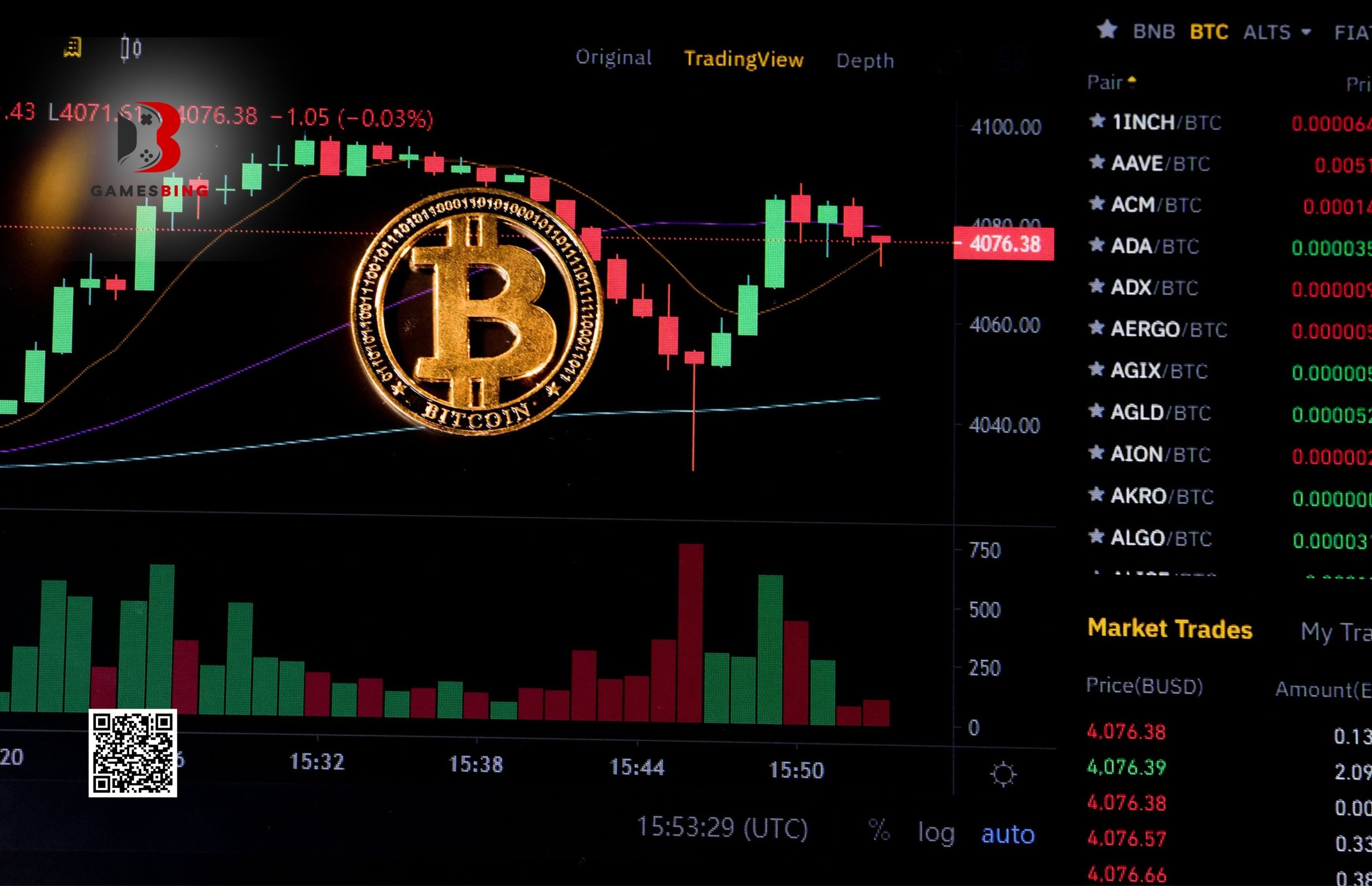Cryptocurrency leveraged trading is a procedure usually undertaken to finance assets, projects, or operations. This term is usually employed by finance managers or people working in finance. Leverage determines companies’ balance sheets, investing and trading stocks, their derivatives, and cryptocurrencies.
If someone around you is recognized as a largely leveraged person, it’s a cue that this person has massive debts as compared to his assets. Companies issue debt while leveraging assets or project purchases, rather than selling equity or giving cash directly.
Individuals also employ leverage while taking immense loans for huge purchases like mortgages to buy a property. The purpose of using this method is to increase the returns during an investing or buying process.
There’s also a downside to buying huge loans while buying, which is the imminent paying back of the loan. No matter whether the investment is successful or not, the loans have to be paid back. In this article, cryptocurrency leveraged trading and its functionalities in real life will be discussed.
Types of Leverages
Leverage is quite a broad term and it encompasses various aspects. Usually, it represents the financial position of a company or returns rate (profit) while buying something huge. Here are the types of leverages;
Corporate Financial Leverage

Companies rely on leverage which has a favorable value for them. Hence, it’s an essential strategy and analysts are mobilized to use various methods for calculating the firm’s average leverage ratios.
One example of this corporate financial pull is the Debt to Assets ratio. In this technique, the total debt of a company is divided by its total assets. If the ratio is close to 1, this denotes that the growth of the company is majorly due to debts.
Likewise, if the Debt-to-Assets ratio is above 1, it means the company is insolvent and dense with debts. Whereas, if the ratio is below 1, the firm is considered to be steady and safe. Debt to Equity is another example of this type of leverage.
Margin Trading
Margin trading is a form of leverage usually operated for stocks and cryptos. Margin trading is also commonly known as Cryptocurrency leveraged trading as well. In margin trading, the trader posts a specific amount as their collateral or margin. This allows them to buy more funds or loans to make gigantic profits.
Leverage ratios are utilized in margin trading to calculate the possible leverage for an investment. Here are some leverage ratios and their profits are explained;
- A 10:1 leverage ratio on trading margin implies that the trader is going to make 10 times the collateral money. Consider if someone has invested $10 as margin, they will make ten times $100, worth about $1000.
If the trader has losses on their trade, the leverage ratio will also fall. If it falls below a certain point, known as the maintenance margin, the trade will be warned to top up their account. If the trader fails to take measures, they will have to face liquidation or other penalties from their exchange or broker. As a result, they could be barred from trading on margin.
If you need an advice from expert then you should read, Dave Ramsey Cryptocurrency, A Financial Expext Advice On Investing in CryptoHow does Cryptocurrency Leveraged Trading work?

Bitcoin is currently trading at $26,295.32 but it’s uncertain whether its price will elevate or go down. The crypto trade range has a margin of $1,000 and offers a margin trading exchange of 10:1. 10:1 means that the leverage is 10 times the worth of the margin, and the amount equals $10,000.
Using the leverage above, a trader tries to sell 0.2 BTC at the rate of 10,000. After that, the trader will wait patiently for BTC to reach $45,000. Then, they can buy 0.2 BTC at a lesser rate of $9,000 and make a profit of about $10,000. For 100% profit on the trade, a 10% favorable price must have a 10x leverage.
Contrary to that, if the price moves up to $55,000, the trading person will incur a loss of $10,000, and the condition is reversed here. This would remove the balance of their margin, even though the price of assets is only incurring a 10% loss.
If there’s 20x leverage, the trader will have more profit if things are favorable for him. For instance, the trader can exchange twice as much — on a $50,000 market price, selling 0.4 BTC at $20,000. If the price falls to $45,000, the trader can make $20,000 by buying 0.4 BTC at $18,000.
Correspondingly, if the BTC prices hike to $55,000, the trader will have to face a loss of $20,000. At $55,000, 0.4 BTC purchasing price amounts to $22,000. In this condition, they have lost their collateral amounting to $10,000. Furthermore, they are in debt to the lender for about $10,000 as well. Brokers usually employ risk strategies to liquidate positions before such conditions happen.
Here is the guide to invest in Top 10 Crypto Exchange in 2023How to Mitigate Risks while Leveraging in Crypto?
There are various risks while leveraging crypto, hence, one should strategize their plan with their financial managers. This is strictly regulated in various jurisdictions, as well as in the United States. The traders use various tools such as stop-loss and take-profit orders.
These tools help mitigate the risks or losses and reduce the continual monitoring of open positions. One must also evaluate their ability and willingness to undertake the risks associated with cryptocurrency-leveraged trading before making a decision.
Benefits of Leveraging in Crypto
Extra Purchase Offer

Leveraging offers a trader more room to make a huge profit. It can generate 10-fold or 20-fold revenue if the lock is on your side. Moreover, one also needs to have skills in analyzing finances and buying stocks or cryptos.
New Possibility for Investing
Although this tactic could be risky. However, one could have a fixed amount of money in their account and use it to take funds. Then, use the assets to target various companies to invest in. The field is open, one just needs to have assets to invest in multiple firms. This also makes your account flexible and expands the frontier of your influence.
If you want it check-out the risk of index, here is the detail on How to Check Crypto Fear and Greed Index?Drawbacks of Leveraging
Increased Risk and Complications
There’s only one drawback of this technique that outweighs all its benefits. If someone doesn’t have a larger margin, the brokers refuse to support them. The margin and risk are directly related to each other. By increasing the margin, the risk will also increase and vice versa. If the leverage doesn’t work well, the brokers will inform you and your account can get closed with less money than before.
This method isn’t for novices as it caries a time-ticking bomb that can make your money vanish in mere seconds. Hence, one must learn about it through online courses and put a lot of effort into it before taking funds from somewhere. Take it on if you are confident enough to manage an enormous risk. If not, this isn’t for you.
Conclusion
Cryptocurrency leveraged trading offers experienced traders a potent instrument to intensify profits and access a wide range of assets. However, it comes with substantial risks and intricacies. To succeed in leveraged trading, one must have a profound understanding of market dynamics with effective risk management strategies.
As with any investment, it’s crucial to conduct extensive research, process with a demo account, and start with a prudent approach before assessing greater leverage ratios. Cryptocurrency leveraged trading can be rewarding, but it’s not a guaranteed route to riches, and careful risk management should always be the prime priority for traders in this domain.
For more info visit Gamesbing.com









 Gamesbing | Designed and Developed by
Gamesbing | Designed and Developed by